The Baldur’s Gate Saga is that rarest type of game – almost universally beloved, still endlessly and obsessively replayed, discussed, and modded to this day. It inspired an entire sub-genre and though many games have tried to equal it – most recently, the excellent Pathfinder: Kingmaker – none have managed to beat the sheer size and epic scope that Baldur’s Gate brought to the table.
Without a doubt, it still holds up as one of the best PC games of all time.
And while the Bhaalspawn saga is finished, there are still so many adventures to be had in the enduring fantasy world of the Forgotten Realms. For almost two decades now, fans have been clamoring for a true third installment to the series. But, with the exception of the bizarre (and many would say – superfluous) Siege of Dragonspear interquel that sought to bridge the gap between Baldur’s Gate 1 and 2, their pleads had gone unanswered.
But then, seemingly out of nowhere and to the delight of RPG fans all over the world, Belgian developer Larian Studios announced in 2019 that they are developing Baldur’s Gate 3. Recently, the first gameplay video has been revealed, so this seems like the perfect time to talk about BG as a franchise, and everything that we know, suspect fear, and hope will be in Baldur’s Gate 3.
Baldur’s Gate 1
When it came out in 1998, few could have predicted that it would be such a hit. Not only did it manage to revitalize the fading CRPG genre, but it also single-handedly established developer BioWare as a rising star and paved the way for their future success.
An epic fantasy through and through, you started off as a Level 1 nobody, barely able to swing a sword, cast a spell, or pick a lock, and ended with you uncovering the truth about your heritage and defeating a mighty evil. For many gamers, BG1 served as a gateway to Dungeons & Dragons.
Before the game, they knew nothing about THAC0 and kobolds, and after finishing it, they knew everything about the pantheon of Faerûn, when they should dual-class, and why the Dagger of Venom is such an awesome weapon. An expansion pack “Tales of the Sword Coast” was released in 1999. It featured new items, spells, quests, an increased level cap, and one of the most memorable dungeons in gaming – Durlag’s Tower.
Baldur’s Gate 2
Baldur’s Gate 1 has its fans who will insist that its low-level nature is better suited to evoke that classic adventuring party feel, but most will agree that everything it does well – Baldur’s Gate 2 does better.
The quintessential example on how to make a sequel, BG2 has more of everything: more quests, mightier spells, legendary items, characters which now feel like they are actual persons and won’t hesitate to chime in with their opinions. But most of all – it had more content. You can play BG2 for more than a hundred hours and still find more things to do – the game is overflowing with content, tasks both big and small.
Like ToTSC, BG2 also had an expansion pack – the “Throne of Bhaal”, which served as the ending to the many adventures of the main character – the Bhaalspawn. Most longtime fans will agree that ToB is not up to the stellar quality of the base game and that it feels a bit rushed, but it is still an appropriately epic conclusion to the saga.
Baldur’s Gate: Dark Alliance 1 & 2
The hack and slash spin-offs released in 2001 and 2004, respectively.
Besides the name and the city of Baldur’s Gate featuring heavily in both games, they don’t have much to do with BG 1 and 2.
Still, many gamers fondly remember them as fun experiences in their own right and they have obviously been popular enough that a new Dark Alliance game is also in the works. This time, you will play as famed character – and frequent Baldur’s Gate 1-2 cameo star – Drizzt Do’Urden and his adventuring party.
Baldur’s Gate III – The Black Hound
The canceled sequel to BG2, The Black Hound was intended to have been a very different game – far more somber and dealing with themes like guilt and featuring deep role-playing options.
Envisioned by lead designer Josh Sawyer – who led the development of such games such as Icewind Dale 2, Neverwinter Nights 2, Fallout: New Vegas, Pillars of Eternity 1 and 2 – it was unfortunately canceled after publisher Interplay ran into financial troubles.
Incidentally, Josh Sawyer was the lead designer for another canceled third sequel of an equally legendary series – Van Buren, the codename for Fallout 3. He managed to salvage some of the story ideas and gameplay mechanics for use in future projects.
Baldur’s Gate Enhanced Editions and Siege of Dragonspear
In 2012 and 2012, Beamdog Studios, a company founded by BioWare co-founder Trent Oster, released the remakes – called Enhanced Editions – to Baldur’s Gate 1 and 2. Considering they had the source code, the enhancements were minimal – even lazy – and the newly added content badly clashed in style and presentation compared to the originals. Not to mention that you can no longer buy the originals on any game store, only the Enhanced Editions.
Still, the EEs updated the engine (while also introducing a plethora of new bugs that they still haven’t fixed), introduced numerous quality of life features, and sparked a renewed interest in the series. The Siege of Dragonspear interquel was less successful. Featuring awful writing, out of place political commentary, and a strange plot, many fans refuse to acknowledge it even exists.
But it could be argued that without these Enhanced Editions, faulty and missed opportunities though they were, Baldur’s Gate 3 never would have happened. It showed Wizards of the Coast (who own the Baldur’s Gate copyright) that, if there is that much interest in the remakes of BG, then making a third part is definitely a wise business investment.
Baldur’s Gate 3 – Enter Larian
Rumors about a Baldur’s Gate 3 have been circulating for over a decade. Brian Fargo, creator of Wasteland, former head of Interplay and founder of inXile, and Feargus Urquhart, the CEO of Obsidian Entertainment, both pitched the idea for a BG sequel several times but were rejected.
Larian had also been a fan of the series and first approached Wizards of the Coast about doing BG3 after the release of Divinity: Original Sin 1 in 2014. Thinking they lack experience and fearing that D:OS was a one-time fluke, WoTS was cautious about taking them up on their offer.
It wasn’t until previews of Divinity: Original Sin 2 (not just a great CRPG, but one of our favorite couch co-op games) started pouring in that WoTS changed their mind and got in touch with Larian to see if they were still interested in doing BG3. Which, of course, they were.
Who in their right mind wouldn’t be?
Baldur’s Gate 3 – The Reveal
Though it was speculated for months before and all but openly confirmed, Larian finally acknowledged that they were developing BG3 a week ahead of E3 2019. The first trailer brought us several important pieces of information and hinted at what the game would be like.
Mind Flayers – also known as Ilithids – appears to be the central antagonists, as we see a member of the Flaming Fists, who serve as the guards of the city of Baldur’s Gate, transform into one of these Chtulhuesque creatures.
Larian also provided additional information: the game would take place approximately 100 years after Baldur’s Gate 2, it would use a modified 5th edition of the D&D ruleset, and an adventure module, “Baldur’s Gate: Descent Into Avernus”, was released to serve as a prequel for the upcoming game.
Fan favorites Minsc and his faithful hampster companion Boo are also slated to return, as is the author of the best and not at all embellished series of guidebooks – the fabulous Volothamp Geddarm (or just Volo for short) himself.
And then, for a long, long time – nothing. We didn’t know anything else about the game – would it be Real Time With Pause (RTWP) like BG 1 & 2, or would it be Turn-Based (TB) like Larian’s last couple of games? How many characters would we be able to take into our party? Is the character creation and conversation system going to be like the one in D:OS2, or something else entirely?
We would have to wait for over half a year – an excruciatingly long time for any fan! – for the answers to these questions.
Baldur’s Gate 3 – The Opening Cinematic
The trailer looks like an extended version of the first one. We find out that your main character and several potential party members have been abducted by the Mind Flayers and infected with their tadpoles.
If left untreated, they will gestate into a fully grown Ilithid, destroying you from the inside out, through a process called Ceremorphosis – which is how these creatures reproduce.
Before the transformation can be completed, the Ilithid’s ship is attacked by a group of dragon-riding Githyanki – sworn enemies of the Mind Flayers. Your ship goes down in flames and the game begins.
Baldur’s Gate 3 – The Gameplay Footage Reveal
We had our first look at the extended gameplay footage courtesy of Swen Vincke, founder of Larian Studios, who showcased the game. Of course, this is all pre-alpha, so the game will look significantly different when it comes out – better graphics, fewer bugs, more classes and races, the works.
The character creation looks similar to the one in D:OS, but with D&D 5th Edition rules. Right now, the following races (and subraces) were revealed: Tiefling (Asmodeus), Drow, Human, Githyanki, Dwarf (Hill Dwarf), Elf (High Elf), Half-Elf, Half-Drow, and Halfling (Lightfoot Halfling).
As or the classes, six of them will be in the Early Access release: Fighter (Battle Master and Eldritch Knight), Wizard (Evocation and Abjuration), Rogue – (Arcane Trickster and Thief), Ranger (Hunter and Beast Master), Cleric (Life, Light, and Trickery), and Warlock (Fiend and Great One), but Larian has assured us that all 12 core classes will be included in the full release.
Prestige classes are also likely to make their way to the initial release, and more may be included as part of future DLCs and expansions.
Similar to D:OS2, you can choose to be one of the preset companions. These are: Astarion (a High Elf vampire spawn Rogue), Shadowheart (a Half-Elf Cleric of Shar, evil goddess of darkness and loss), Gale (Human Wizard with a Netherese Destruction Orb embedded in his chest), Lae’zel (the Githyanki Fighter we saw in the opening cinematic), and Wyll (a Human Warlock that made a hellish pact with a devil). And, like in D:OS2, you can make your own character and you will then encounter these as companions that you can choose to accept into your party.
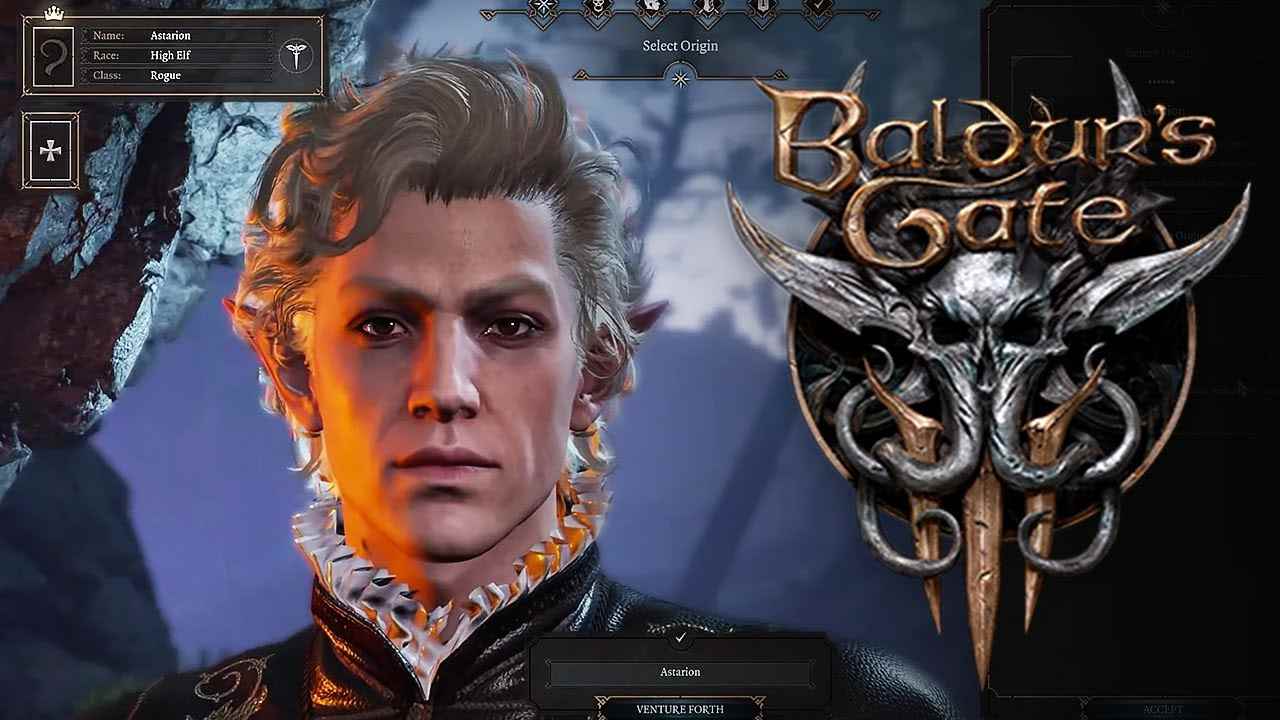
Sven chose to play as Astarion. The game begins with our vampire spawn waking up on the beach after being shipwrecked (Larian loves to start their games like this). Finding it curious that he can suddenly walk in the daylight without bursting into flames, Astarion goes to explore his surroundings.
He soon meets Shadowheart, his first companion, and here we see how the dialogue will function – similar to how D:OS2 handled it, you have available choices presented in a third-person description of what your character is going to say, instead of exactly how they will say it.
Astarion has the choice to ask Shadowheart additional questions, accept her into the party, turn down her offer of assistance, and even succumbing to his thirst and biting her. She points out that they still have the tadpoles in their heads and they should find a powerful healer as soon as possible. On the other hand, it appears that these brain leeches give you and your fellow captive companions a sort of shared psychic connection.
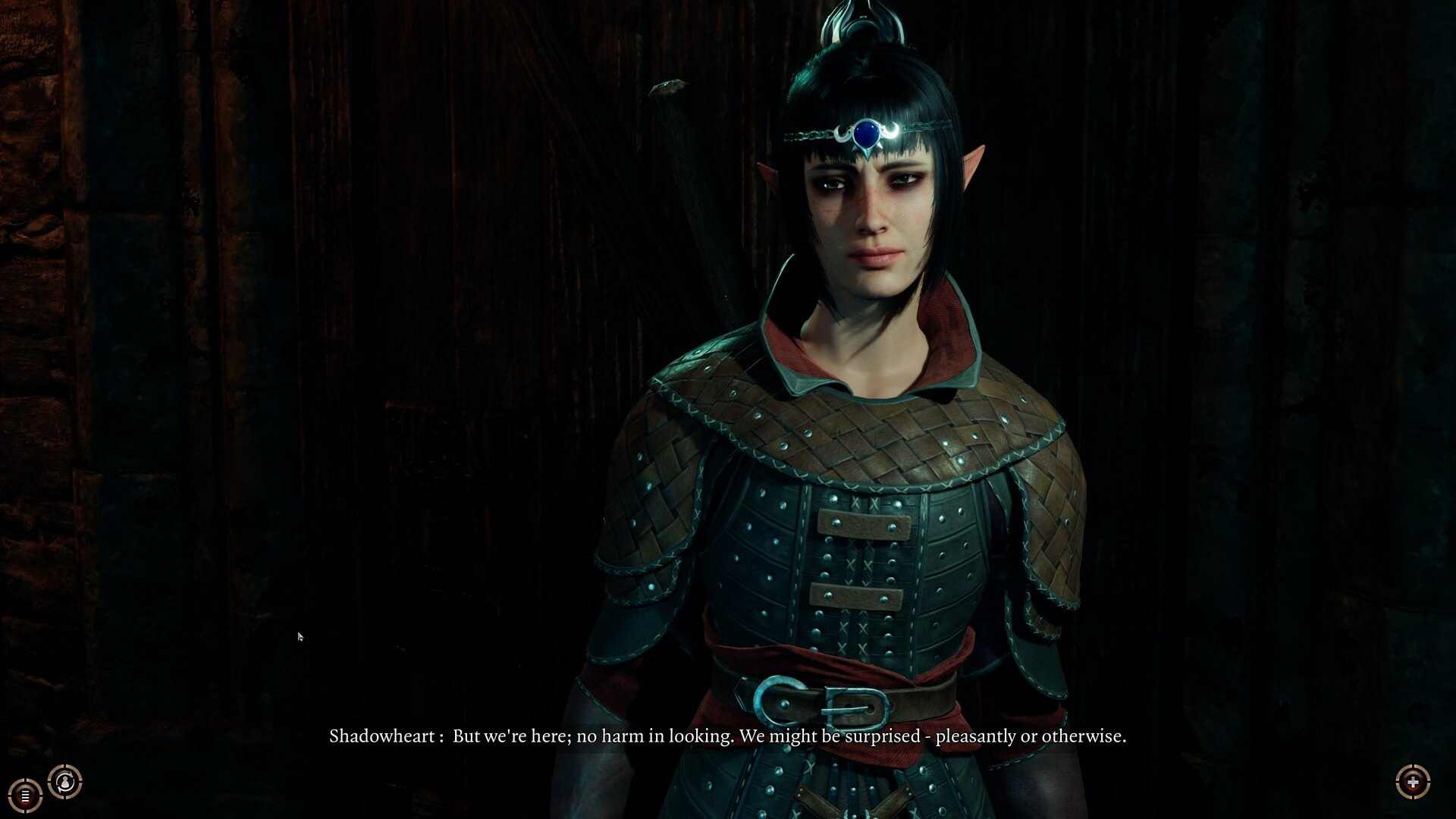
The first battle reveals that the combat will be, as expected, Turn-Based in nature. But unlike D:OS, here it is taken in phases – depending on which side wins the initiative roll, all the characters that we control, or all of the enemies, will play out their actions and only then will the opposing side get their turn. Multiplayer is also in, and you will have the option to play this game with friends.
The combat is very dynamic and you have many more actions than previous BG titles. You can choose to jump, throw items (Swen killed one of the enemies by throwing his pair of boots at them), reposition yourselves, seek higher ground (verticality is important and bestows several combat bonuses for ranged attacks) and so on.
After suffering a string of unlucky misses (even though the hit chance was 90% – very reminiscent of X-COM), Swen got a complete party wipeout and had to restart the game. This time he employed a different strategy – he played dirty.
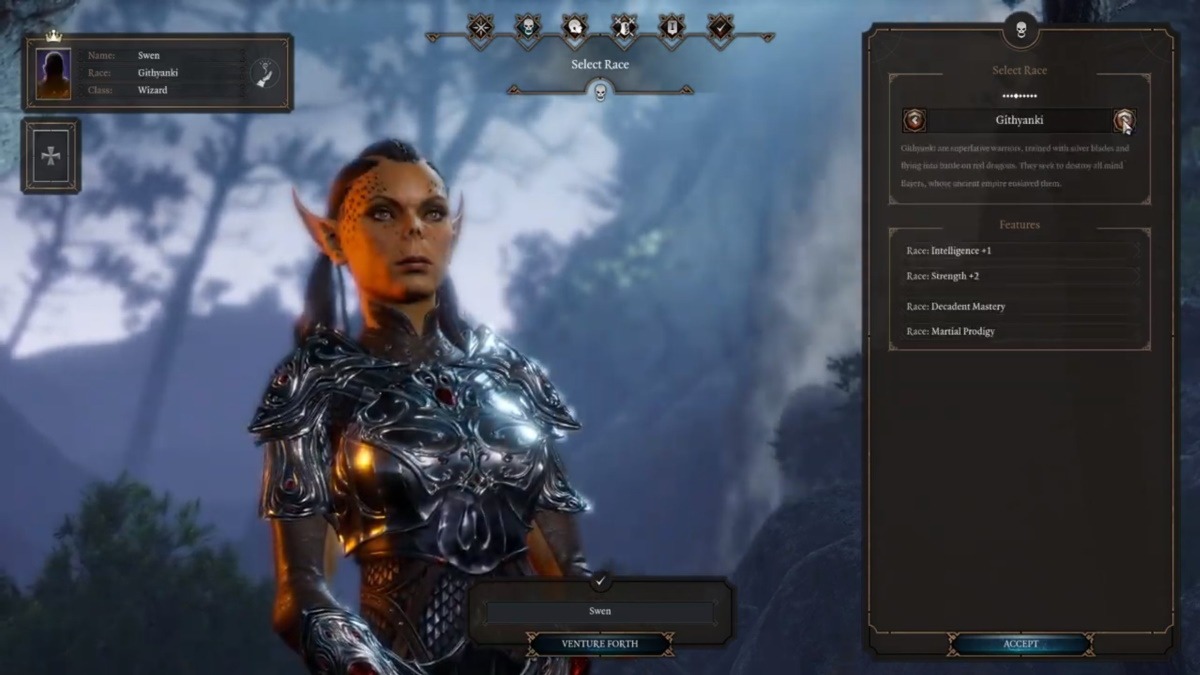
First, he turned on the sneak mode so that the creatures wouldn’t see him. Sneak functions differently here – you have to pay attention to areas of the map that are shrouded in darkness and which way the enemies are facing. By looking at gaps in their patrol patterns, you can outmaneuver them without resorting to violence.
Swen fired off a flaming arrow and exploded a flammable tank, instantly taking out one of the creatures. He fared much better this time around, showcasing how a change in tactics can yield significantly better results.
However, the party didn’t get out of this unscathed, so it was soon time for a rest. The camp is a place where you can interact with your companions and get to know them better, and have important moments of personal introspection. These could have important ramifications down the line, potentially redefining your character’s alignment and convictions.
The game really does look beautiful. The characters are rendered in high detail, the spell and ability effects look appropriately impressive. Judging by Larian’s other titles, it will also be well-optimized, but to see all of these graphical options in full resolution will still no doubt require a great gaming PC.
In the morning, you meet your second companion – Gale. Your characters’ skills, such as their Perception score, will affect if they notice things like hidden switches and item cashes – another similarity to the way this worked in D:OS.
You will be able to use spells and abilities in ways that are closer to how they operate in PnP, so the spell Featherfall can be employed if you want to, for example, jump from a tall ledge without getting hurt. Swen notes that the game is filled with secrets and that no character will be able to uncover all of them during a single playthrough.
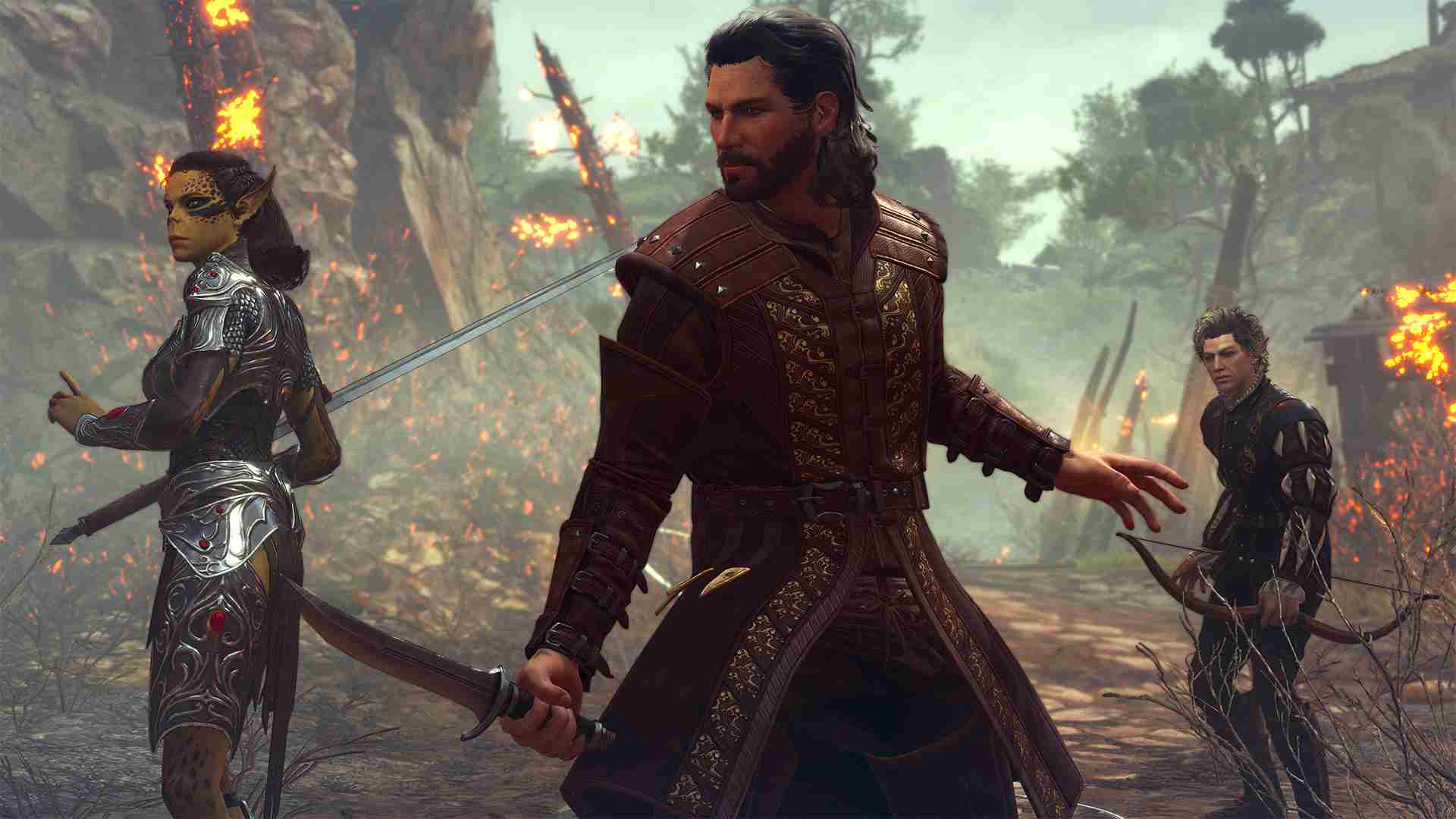
The party, now numbering three members, soon encounters a group of evil bandits guarding some catacombs. Shadowheart fails a Charisma roll for a Deception check and the party is forced into combat. Swen once again demonstrates the advantages of stealth, with Astarion sneaking behind an enemy and pushing them from a ledge.
After the battle ends, Astarion descends into the dungeon. First, he bluffs his way past the door guard and strategically takes out the remaining bandits one by one. Another important part of D:OS’ design is present in environmental manipulation – you can stack objects to form barriers, obscure light sources, or make a makeshift staircase. The way traps work is also quite similar to Larian’s former titles.
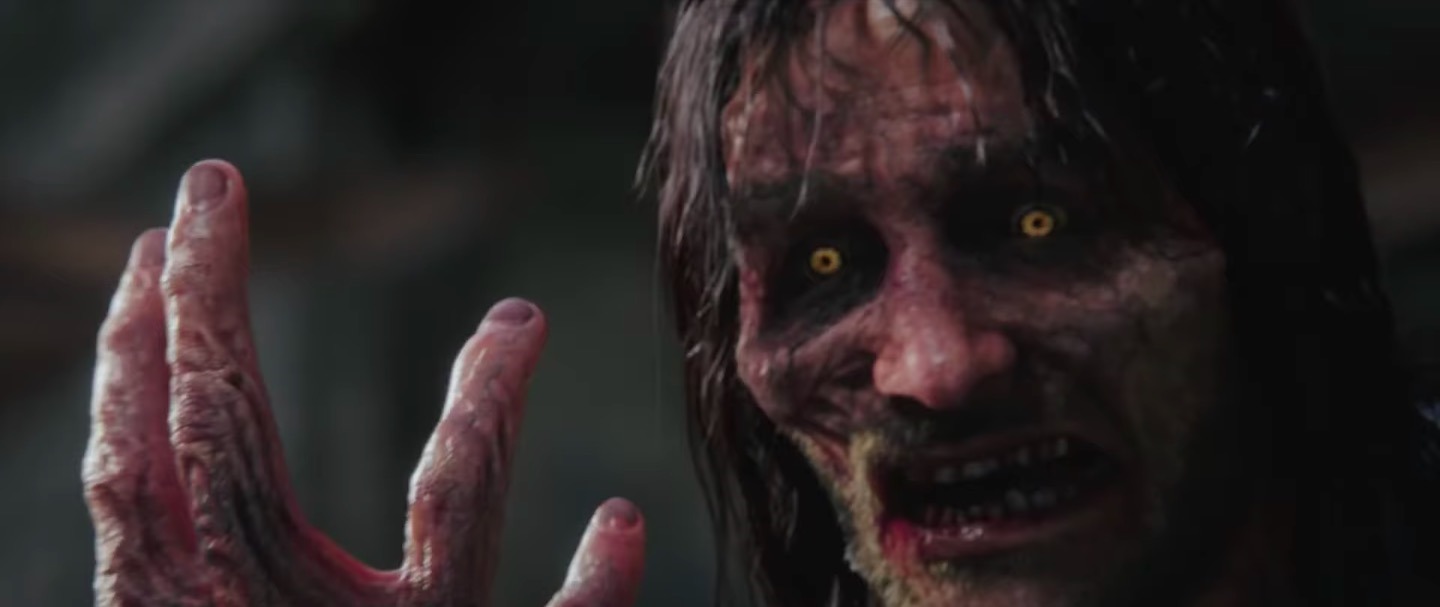
Further in the crypt, Astarion discovers a sarcophagus that has a curious trinket – an amulet that will allow you to speak with the dead. This means that we will be able to get information out of characters even if they die (or we kill them) – this system hasn’t been seen since Troika Games’ Arcanum: Of Steamworks and Magick Obscura. Astario pilfers the contents of the sarcophagus, but this causes the nearby skeletons to rise. Sneaking past them is a lot trickier, so he has to make a run for it.
After exiting the dungeon, the game bugs out. It is a pre-alpha version, after all. Nevertheless, Sven gets a round of applause for his game and playing skills.
All that’s left is time for a few more questions. Swen confirms that you will be able to re-stat your companions – at least their ability points, but maybe not their class. The game is – for now – confirmed to come out only on the PC (Steam, GOG, and Google Stadia), but it will almost definitely become available on consoles at a later date.
Swen claims that alignment will not be that important and that Wizards of the Coast asked them to tone down its significance. But characters still possess their own sense of morality, so good characters won’t stay with you for too long if you commit too many evil deeds, and vice versa.
Final Words
Even in its unfinished state, it’s obvious that Baldur’s Gate 3 is going to be a worthy addition to BG’s legacy, and we can’t wait to get our hands on the Early Access version. No release date for the Early Access as of yet, but it will probably become available in the next few months. Rumors are that it will have more content than D:OS2 had in its Early Access.
No surprise there, since Swen Vincke is a big proponent of this approach: “If you look at Divinity: Original Sin 2 when it went into Early Access and when it came out of Early Access, it never would have been as good. So we want to give this one the same treatment.”
It still remains to see how Larian will handle the story, writing, and characters – BG has set a high bar in this department that is hard to beat – and if they will once again include tedious level scaling for enemies, abilities, and loot.
But if they manage to overcome these hurdles, Baldur’s Gate 3 could very well be the best game they’ve ever done, and one of the best RPGs, period.